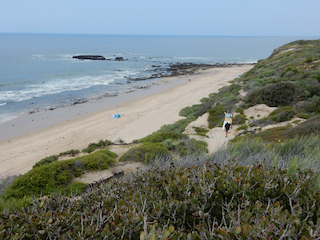
-
| 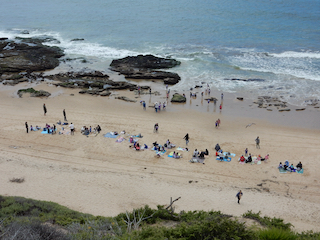
-
| 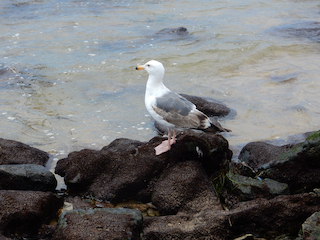
second winter* Western Gull
- (*Source: allaboutbirds.org)
|
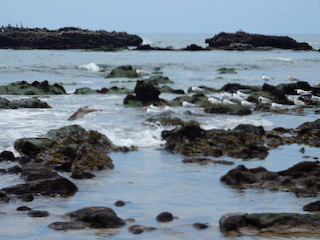
Royal terns - thanks to Teresa Norris and Sharon G. for help with the
identification. The terns from the last field trip were also likely Royal Terns according to Dr. Hoese's recent observation at Bolsa Chica.
| 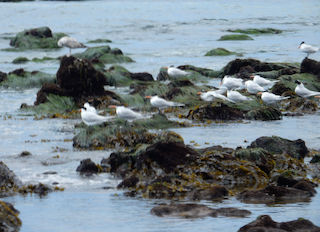
Here is a Cool Fact at allaboutbirds* about Royal Terns:
"In Southern California in the early 1950s, populations of the Pacific sardine crashed while northern anchovy numbers boomed. The area's abundant Royal Terns,
which fed heavily on the sardine, became quite rare. However, the smaller Elegant Tern, which had been rare, suddenly became abundant and has remained so through the present.
Royal Terns have slowly increased to about three dozen pairs in Southern California, most in San Diego County."
- (*Source: allaboutbirds.org)
| 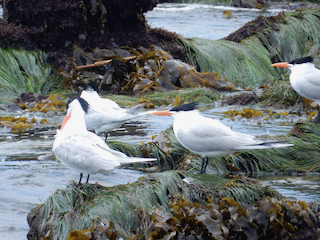
-
|
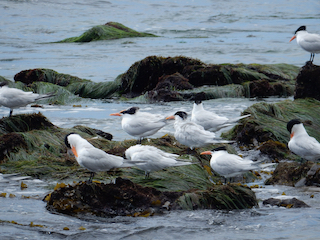
Royal tern
| 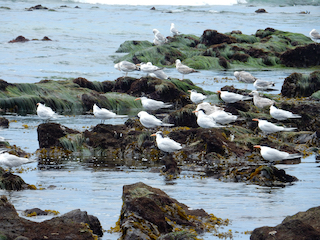
-
| 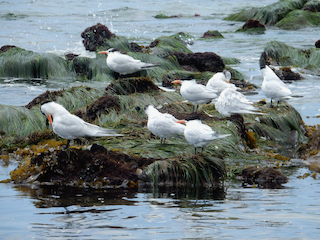
-
|
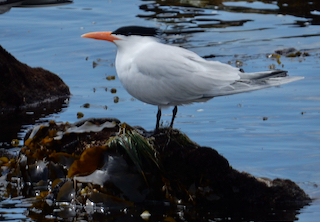
-
| 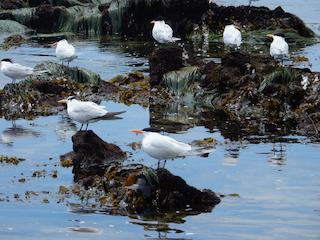
-
| 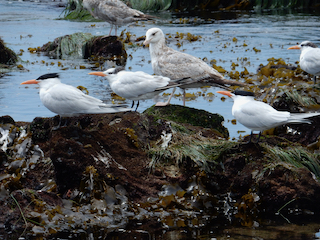
-
|
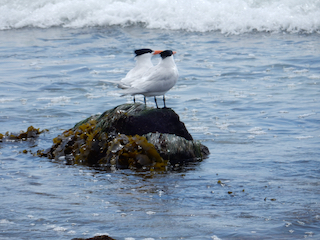
-
| 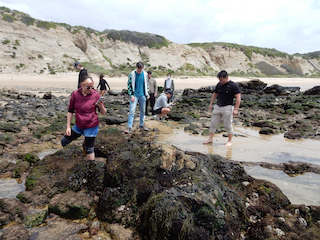
-
| 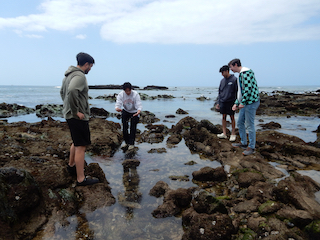
-
|
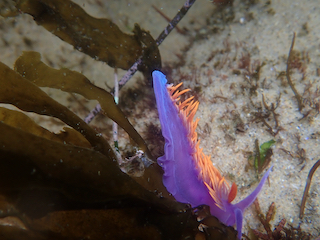
-
| 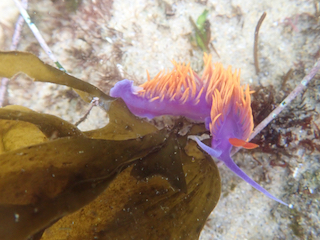
Spanish shawl nudibranch (Flabellinopsis iodinea)
| 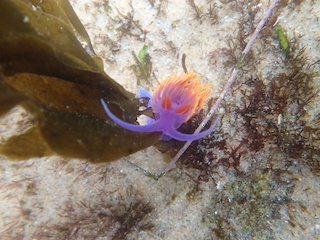
-
|
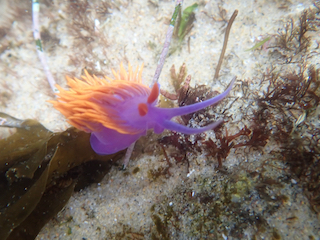
-
| 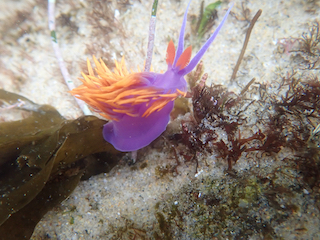
-
| 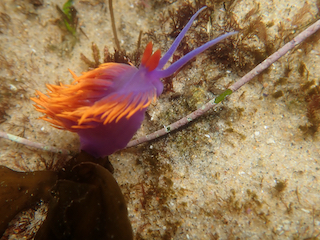
-
|
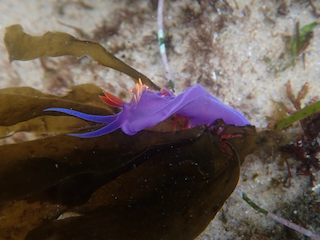
-
| 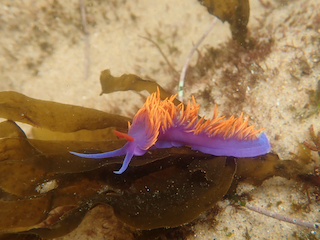
-
| 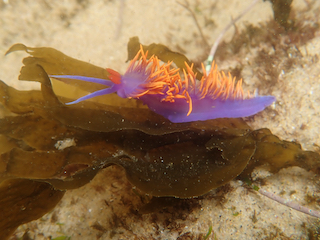
-
|
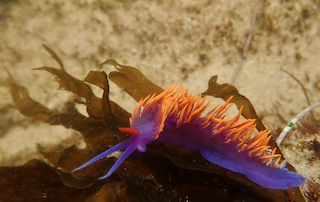
-
| 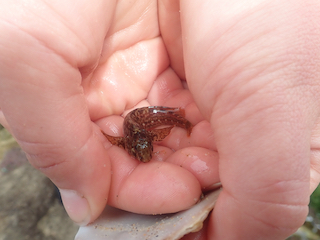
According to an identification kindly provided by Dr. Larry Allen, this is a new recruit of a rockpool blenny (Hypsoblennius gilberti.
| 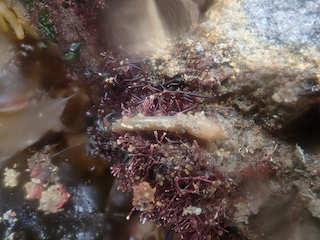
-
|
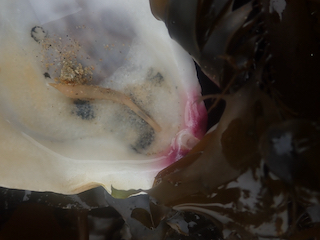
a peanut worm or sipunculan, tentatively a juvenile Themiste pyroides
| 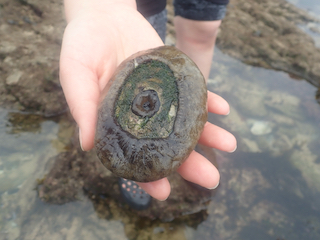
It seemed unusual to find a giant keyhole limpet with such a algal-fouled shell.
| 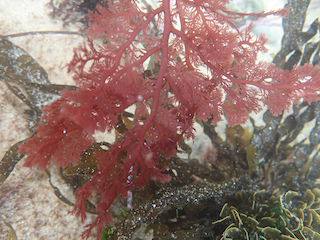
A red alga, delicate sea lace (Microcladia coulteri) among brown algae including some
banded tidepool fan (Zonaria farlowii) on the lower right.
|
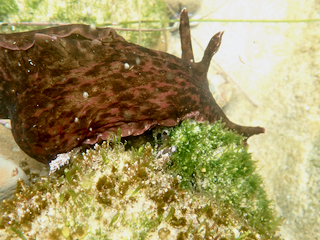
Aplysia californica (California sea hare)
| 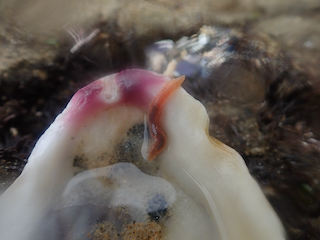
-
| 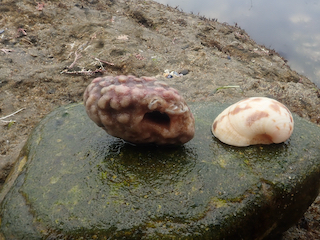
Akatopora tincta (formerly in genus Antropora) is a bryozoan that forms coral-like growths on gastropod shells;
it is very common on particular neogastropods in SoCal and must be a major source of mortality. I am surprised how little studied it seems to be.
|
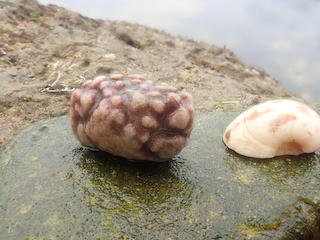
-
| 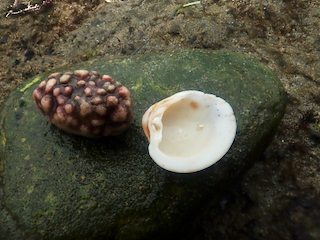
-
| 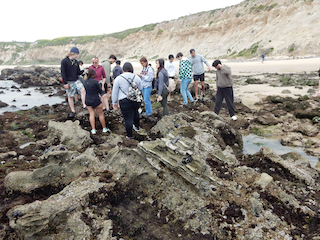
-
|
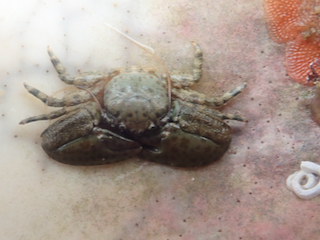
Petrolisthes cabrilloi (Cabrillo's porcelain crab)
| 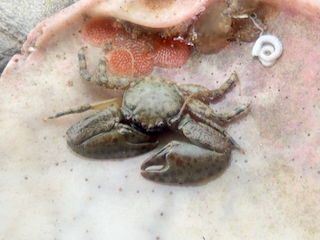
-
| 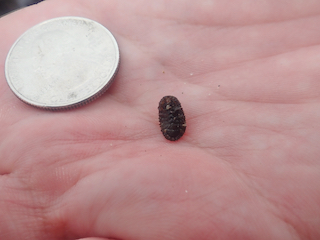
A juvenile of one of our similar spiny chiton species of the genus, Nuttallina.
|
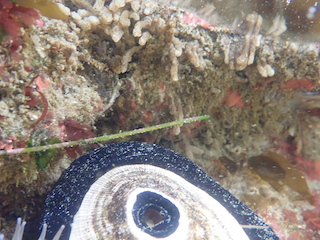
This giant keyhole limpet might have been feeding on those tunicates, etc.
| 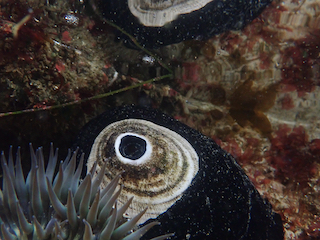
-
| 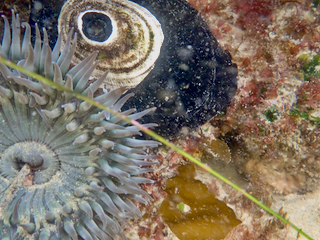
-
|
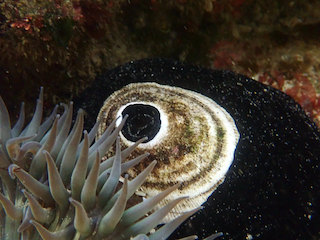
-
| 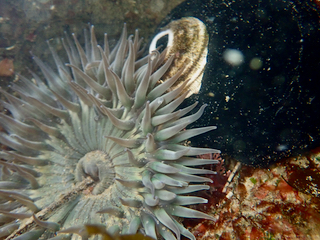
-
| 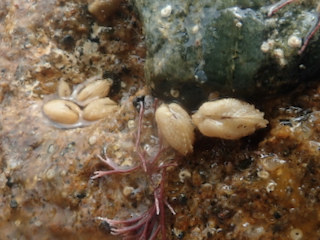
-
|
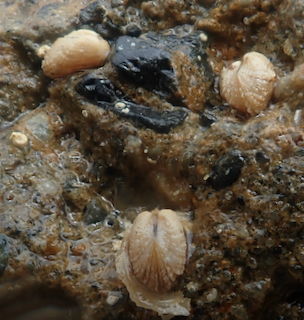
-
| 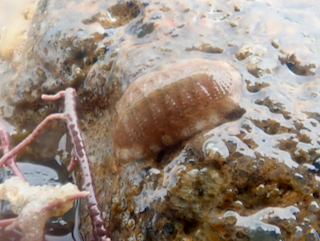
Lepidozona pectinulata
| 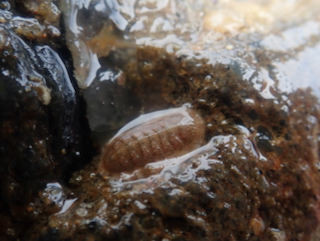
-
|
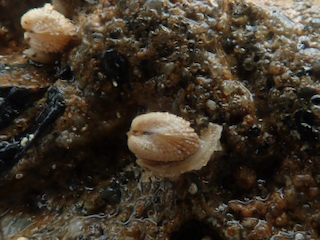
-
| 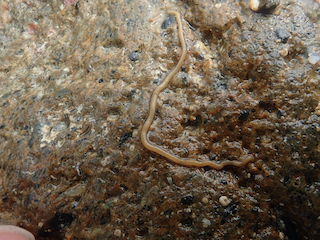
-
| 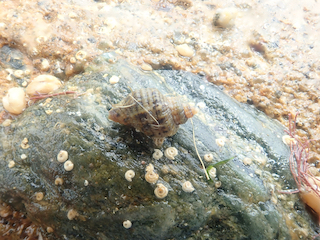
-
|
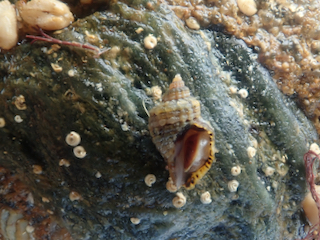
A juvenile Acanthinucella spirata. Muricids are a very species-rich group of similar
appearing neogastropods in our SoCal area, with incredible phenotypic plasticity. Thanks to S. Wiedrick for the species identification.
| 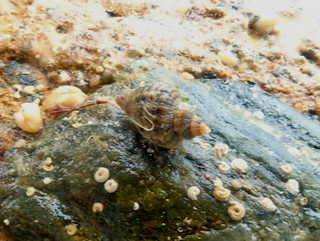
-
| 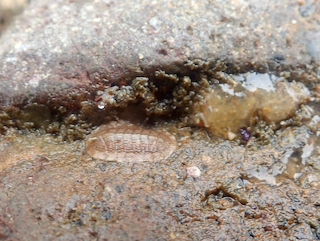
-
|
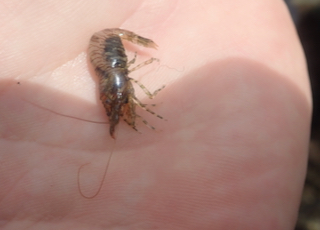
-
| 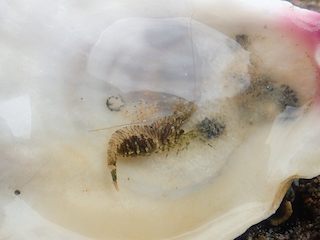
-
| 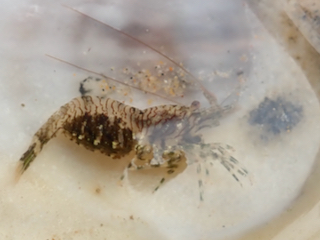
-
|
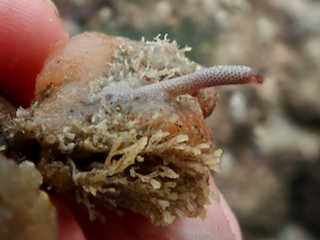
-
| 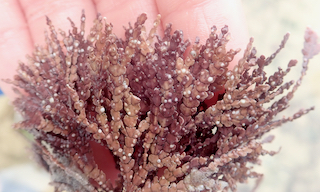
The white structures, each with a pore, on this coralline red alga (tentatively Bossiella orbigniana)
are called conceptacles; they are where
reproductive cells develop and are stored until release. Thanks to Dr. Jayson Smith for reminding me what these are called.
| 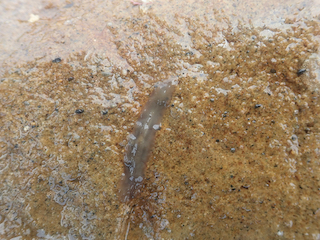
-
|
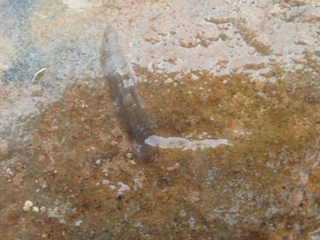
polyclad flatworm (unidentified)
| 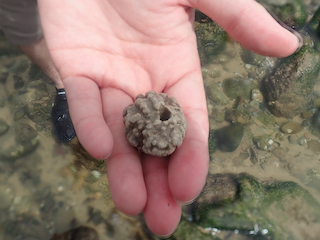
Another example of the bryozoan, Akatopora tincta, completely overgrowing a neogastropod shell;
in this case the shell was likely a Pteropurpura sp.
| 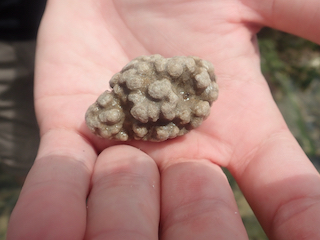
-
|
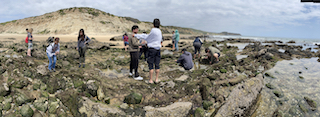
-
| 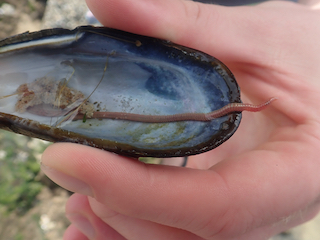
-
| 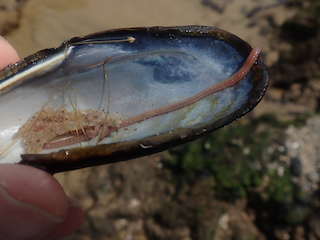
-
|
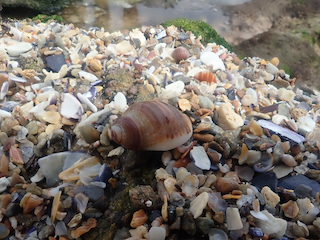
-
| 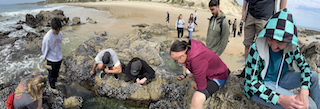
-
| 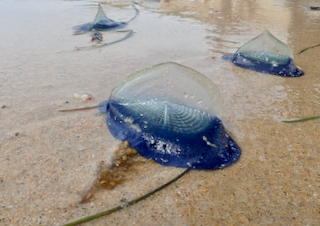
Many Vellela vellela (by-the-wind sailor), a normally pelagic hydrozoan cnidarian, washed up on the beach.
All I checked were left-handed (sail goes from upper-left to lower right); the right-handed ones are expected to sail toward the middle of an ocean gyre as I best recall.
|
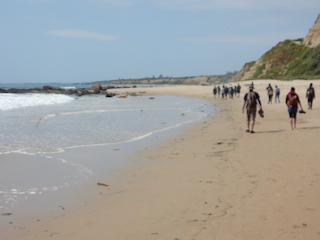
-
| 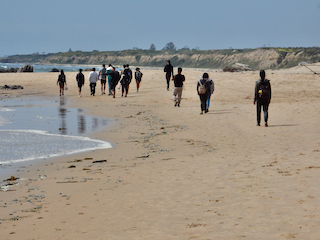
-
| 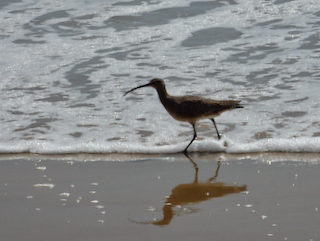
-
|
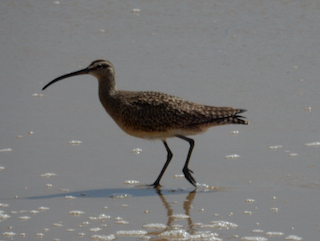
Whimbrel - other shorebirds seen: Willets and one Marbled Godwit
| 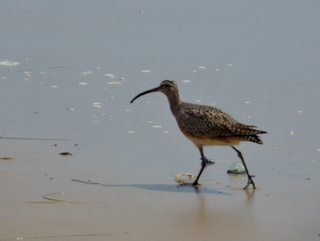
-
| 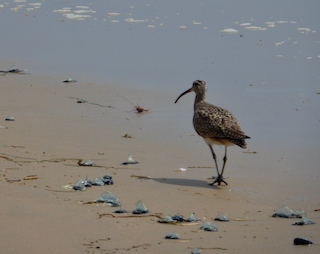
-
|
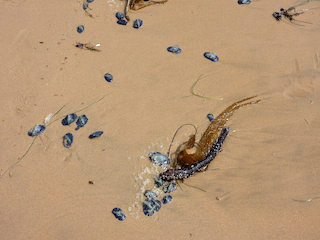
-
| 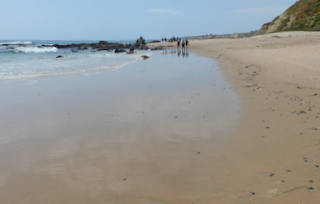
-
| 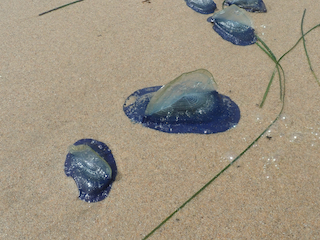
-
|
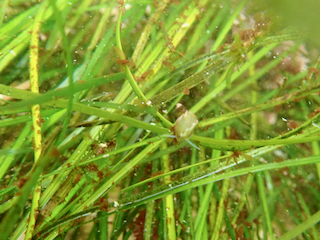
Lacuna sp. on surfgrass - there were dozens of egg cases. See also to the right.
| 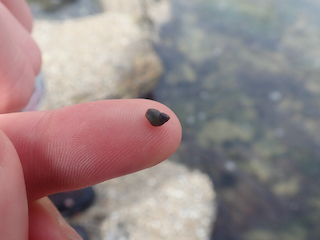
-
| 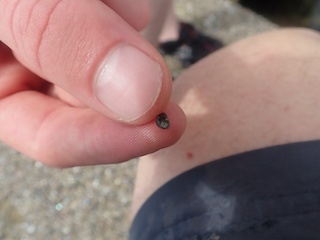
-
|
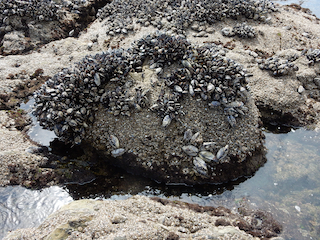
-
| 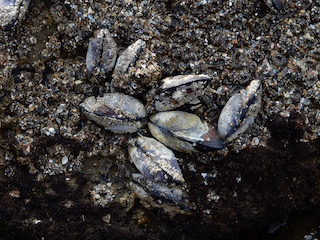
-
| 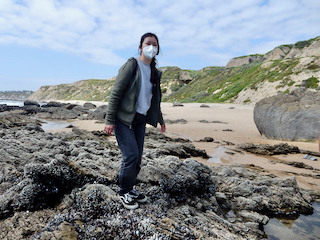
-
|
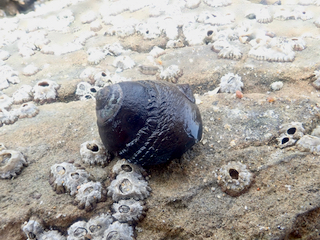
In my experience, black teguline snails (Tegula funebralis) have been rare in
Orange Co. and vicinity except in cooler years. Normally, the similar but more southern species, T. gallina has been more common.
| 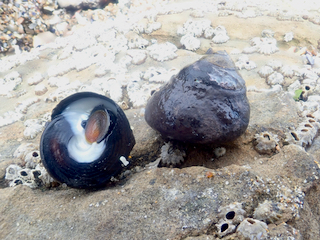
-
| 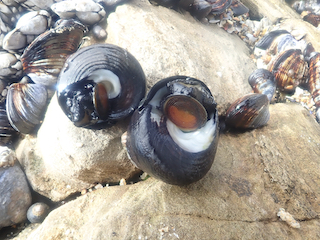
-
|
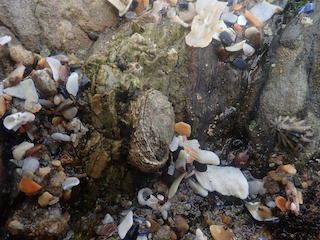
Pseudochama exogyra (reversed Chama) and Lottia conus
(no common name to my knowledge but perhaps the most common limpet species in SoCal)
| 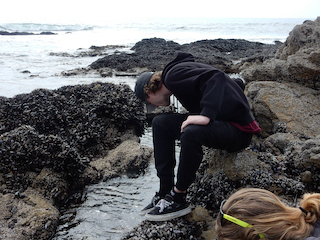
-
| 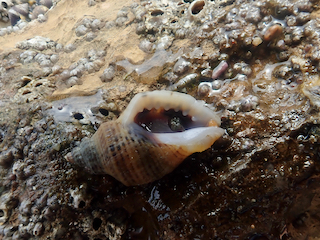
Acanthinucella spirata has a common name, angular unicorn, referring both to the sharp angle of its whorls and,
like congeners, its tooth along the near posterior edge of its aperture that is visible but at an unimpressive angle here. The tooth helps the snail keep its siphon
steady for drilling through its barnacle prey. I think this one had nobody home.
|
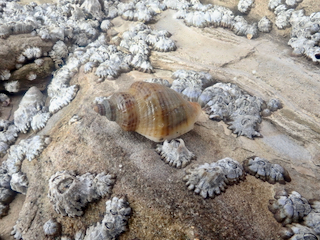
-
| 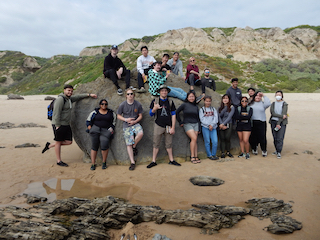
-
| 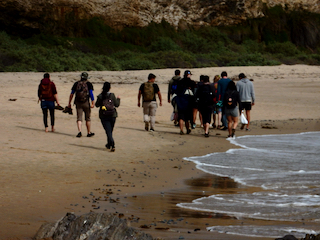
-
|
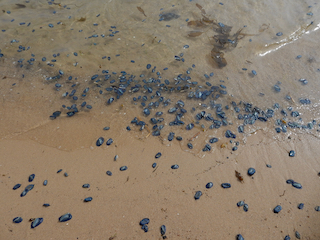
-
| 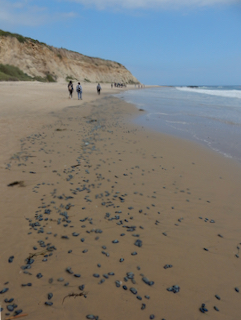
-
|
 Under Construction!
Under Construction! Under Construction!
Under Construction!